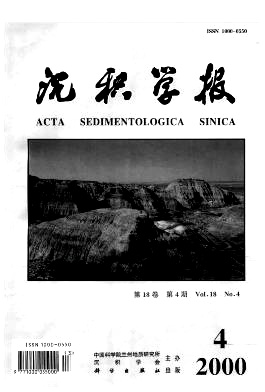The Distribution of Sedimentary Organic Facies in the Continental Facies Sequence Stratigraphic Framework: an example from Middle Jurassic coal bearing series in the Taibei sag of the Turpan Hami basin and Southern Junggar basin
- Received Date: 1999-04-07
- Rev Recd Date: 1999-07-08
- Publish Date: 2000-08-10
-
Key words:
- continental facies sequence stratigraphy /
- sedimentary organic facies /
- Jurassic /
- Turpan-Hami basin /
- Junggar basin
Abstract: The generation and development of sedimentary organic facies are controlled by many factors, such as palaeoclimate, palaeostructure and palaeogeography etc. It is known that these factors have changed periodically in the geological history, and this change must have led to periodical changes of sedimentary organic facies. This can be indicated by distribution of the sedimentary organic facies in the time stratigraphic framework or sequence stratigraphic framework.Due to the lateral variation in the palaeoenviroments, many types of sedimentary organic facies can develop all over the basin during a single period. The lateral zonation of organic facies can be reflected in their vertical superimposition,which to some extend follows the Walther's law. The sedimentary systems tracts in the sequence stratigraphic framework have been proved to be effective methods to analyze regularities and to predict nature of the organic petrology, organic geochemistry and non organic geochemistry of the potential source rocks. Based on the above knowledge, the organic petrological, geochemical and palynological mathods have been used to analyze the distribution of the sedimentary organic facies in the continental facies stratigraphic framework of the middle Jurassic coal bearing series in Taibei sag of the Turpan Hami basin and the southern Junggar edge.Turpan Hami and Junggar basins are typical basins of which hydrocarbon generated from coal measure in China and the continental facies sequence stratigraphic framework in this area have been studied by many scholars and experts.In the muddestone, the organic quantity and potential hydrocarbon generating ability are indicated by fluorescent organic constituent index, TOC, S 1+S 2.The distance from provenance is revealed by SiO 2+AI 2O 3 content. The deep change of sedimentary media is indicated by Ca/Mg. The salinity and reducibility of media is reflected by Sr/Ba.Climate change is indicated by P,Sr/Cu, and the both change of the different sedimentary system tract and cycling of the different types sedimentary organic facies can be reflected by all of these change in vertical profile.The results show that, in general, all types of organic sedmentary facies show vertically symmetrical distribution centered at the transgresssives systems trace(TST). The best hydrocarbon source rocks are preserved in the middle part of the TST, and the potential for hydrocarbon generation becomes poor upwards and downwards from this position.
| Citation: | YANG Jian ye, REN De yi, SHAO Long yi. The Distribution of Sedimentary Organic Facies in the Continental Facies Sequence Stratigraphic Framework: an example from Middle Jurassic coal bearing series in the Taibei sag of the Turpan Hami basin and Southern Junggar basin[J]. Acta Sedimentologica Sinica, 2000, 18(4): 585-589. |






 DownLoad:
DownLoad: